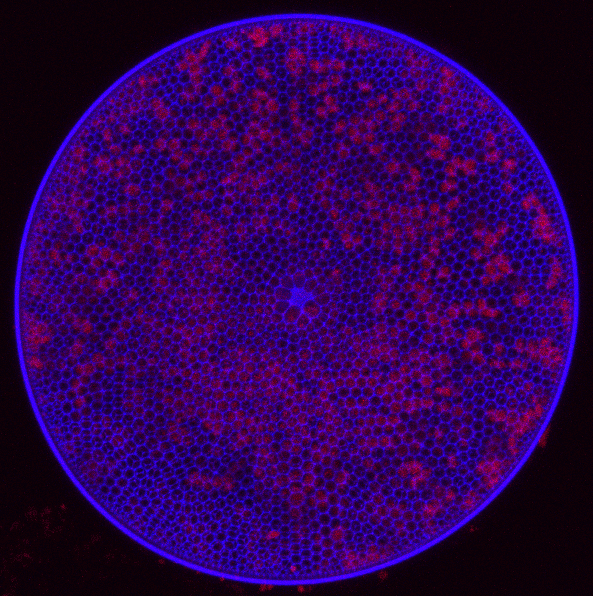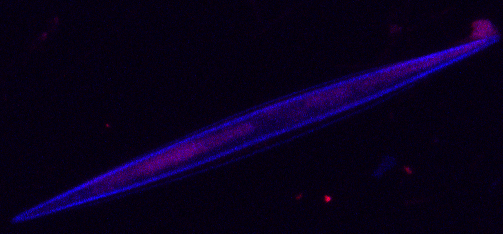(October 29, 2019) --

The recent publication in the November issue of Nature Microbiology, Silicon limitation facilitates virus infection and mortality of marine diatoms highlights the “chink in a diatom’s armor” and why it occurs. The paper is a collaboration of efforts between researchers from Rutgers University, the Dauphin Island Sea Lab, the University of California, J. Craig Venter Institute, Woods Hole Oceanographic Institute, and the Scripps Institution of Oceanography.
Diatoms are single-celled microscopic plants (phytoplankton) that live in the ocean. Using the process of photosynthesis, they produce up to 20 percent of the oxygen we breathe. Diatoms are also important food for animals such as zooplankton and small fish; cells that are never consumed can sink to the seafloor bringing food to the benthos.
It’s understood that viruses affect phytoplankton. Scientists have known about viruses infecting diatoms for around 15 years. The relatively recent discovery of diatom viruses was partially due to them being among the smallest on the planet. The methods of detection used in virology favor larger viruses. However, for a long time, it was thought the glass shell of diatoms provided protection from viruses.
“While we know that viruses infect diatoms, we don’t have much context for how they might affect diatom processes in the environment,” Dauphin Island Sea Lab’s Dr. Jeffrey Krause explained. “For instance, can viruses cause a diatom bloom to decline or can viruses help recycle diatom organic matter? Such fates could determine whether diatom material gets consumed by economically important organisms like fish larvae.”
Led by Dr. Chana Kranzler in Dr. Kimberlee Thamatrakoln’s laboratory at Rutgers, this study finds that diatoms susceptibility to viral infection is surprisingly linked to whether they are stressed by making their glass shell.

“If the diatom can’t acquire the silicon [for their shells] as fast as they want to, we call that stress,” Krause explained. “Our combined data set show that silicon stress accelerates viral infection of diatoms in the field. Drs. Kranzler and Thamatrakoln took these field data and also showed the same result in controlled laboratory conditions, which gives us more confidence in its validity.”
Krause stresses that viruses are not bad. Viruses play a critical role in the ocean, helping to recycle limiting nutrients in the water which enables more productivity.
“Viruses are a natural part of the environment. The fact that viruses are infecting diatoms isn't a bad thing. Viruses affect plankton and bacteria all the time. In the last 10 years, oceanographers are learning about new ways that viruses affect the ocean’s plankton which is helping us understand their ecological role.”
By understanding that viruses are able to disrupt a bloom when diatoms are limited by silicon, provides scientists with a blueprint for the conditions they might examine in other environments to learn about diatom/viral interactions.
“In some regions, we have seen that the amount of silicon available before the diatom bloom has declined in the last 25 years, this means that diatoms might run into stress earlier in the bloom cycle than in the 1990s,” Dr. Krause explained. “So, if diatoms could be more susceptible to viruses under that stress then viruses might directly control the timing of when a diatom bloom ends. Our study now provides context for going to other regions to look at this interaction.”
The fieldwork was funded by the National Science Foundation, as part of a collaboration between Dr. Krause and Dr. Mark Brzezinski (University of California Santa Barbara). The viral analysis and laboratory work was also supported by the National Science Foundation, Simons Foundation, Gordon & Betty Moore Foundation, and the National Oceanic and Atmospheric Administration.